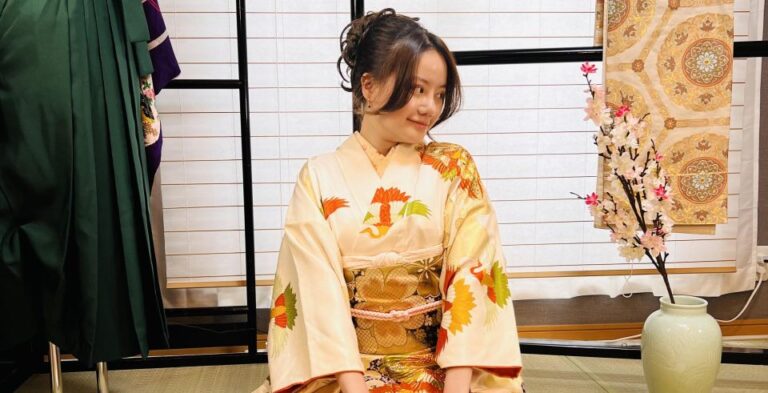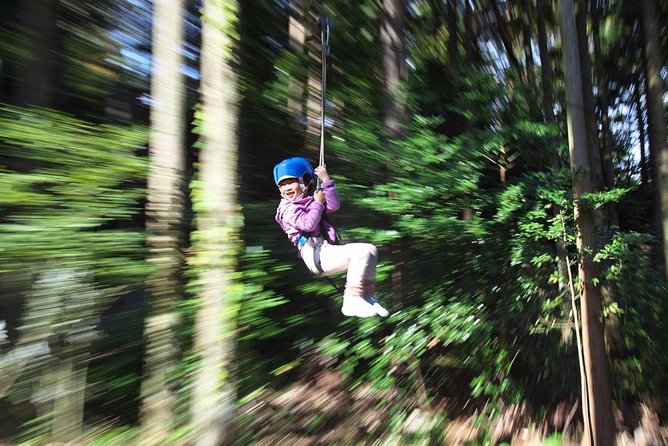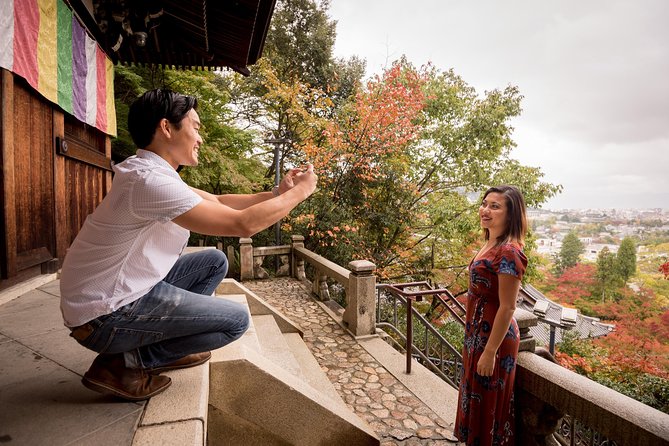Nagasaki, a city steeped in history, boasts a fascinating heritage trail that intrigues travelers. Did you know that Nagasaki was the second city to suffer an atomic bombing in 1945?
As visitors meander through this trail, they will encounter stunning cathedrals, picturesque bridges, and the bustling Chinatown. But what tales do these ancient structures hold, and what cultural treasures await exploration along this path?
Join the journey to uncover the hidden gems of Nagasaki’s past and present, where each step reveals a new chapter of this vibrant city’s narrative.
Key Takeaways
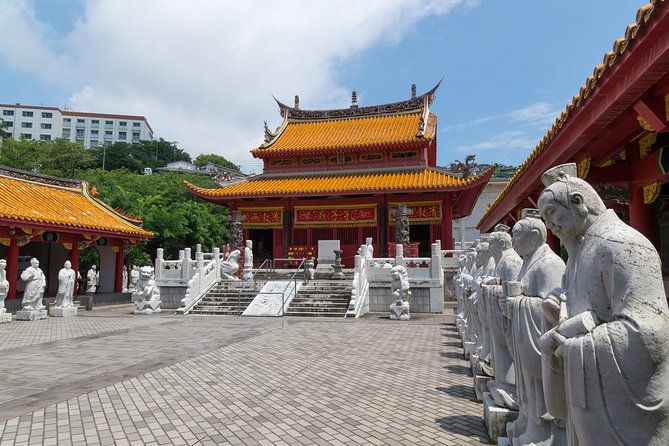
- Nagasaki’s rich history and resilience blend cultural influences, pivotal events, and a commitment to peace.
- Architectural gems like cathedrals showcase Nagasaki’s cultural fusion and religious diversity.
- Iconic bridges highlight Nagasaki’s connectivity and architectural charm.
- Chinatown offers a vibrant cultural experience with traditional cuisine, festivities, and lively celebrations.
Historical Background of Nagasaki
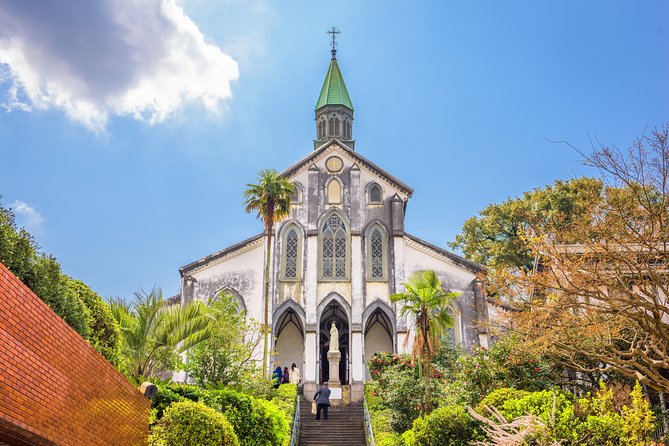
Nagasaki’s historical tapestry weaves together a rich blend of cultural influences and pivotal events that have shaped its unique identity. Japanese influences play a significant role in the city’s history, dating back to the 16th century when Portuguese explorers first arrived, bringing Western culture and Christianity.
Nagasaki quickly became a hub for international trade and cultural exchange, blending Eastern and Western traditions. The city’s historical significance is underscored by events like the atomic bombing during World War II, a tragic moment that forever altered the course of history.
Despite the devastation, Nagasaki rose from the ashes, showcasing resilience and a commitment to peace. Today, remnants of its past can still be seen, reminding visitors of the city’s enduring spirit.
Must-See Cathedrals in Nagasaki
Known for its diverse historical tapestry, Nagasaki boasts several must-see cathedrals that reflect the city’s unique blend of cultural influences. When exploring architecture and religious landmarks in Nagasaki, visitors should not miss these iconic structures:
| Cathedral | Architectural Style | Highlights |
|---|---|---|
| Urakami Cathedral | Romanesque Revival | Reconstruction after WWII |
| Ōura Church | Gothic Revival | Oldest church in Japan |
| Oura Cathedral | Neo-Romanesque | Design by French architect |
These cathedrals not only showcase stunning architectural styles but also hold historical significance within Nagasaki’s heritage. Visiting these sites offers a glimpse into the city’s past and the influence of Western culture on its religious landscape.
Iconic Bridges of Nagasaki
One can’t help but be captivated by the iconic bridges that span Nagasaki’s scenic waterways, each telling a unique story of the city’s connectivity and architectural charm. When exploring Nagasaki’s bridges, visitors are treated to a blend of bridge architecture and local legends that have shaped the city’s identity. These engineering marvels not only serve as vital transportation links but also hold hidden stories within their structures.
To truly appreciate Nagasaki’s iconic bridges, one must take note of:
- Meganebashi (Spectacles Bridge), known for its resemblance to a pair of spectacles.
- Ōhashi, the grand bridge that offers breathtaking views of the city.
- Koyagi Bridge, a historic structure with a fascinating past.
- Oura Bridge, a symbol of resilience and beauty in Nagasaki’s landscape.
Exploring Nagasaki’s Chinatown
Exploring the vibrant streets and savory delights of Chinatown in Nagasaki offers a captivating cultural experience for visitors. The bustling Chinatown district is a feast for the senses, with an array of traditional Chinatown cuisine to tantalize your taste buds.
From steaming bowls of ramen to delicate dim sum, there’s something to satisfy every palate. In addition to the culinary delights, Chinatown in Nagasaki is known for its vibrant festive celebrations. Visitors can immerse themselves in the lively atmosphere, filled with colorful decorations, traditional performances, and a sense of community spirit.
Whether you’re exploring the local shops or sampling the delicious street food, Nagasaki’s Chinatown is sure to leave you with lasting memories of this dynamic cultural hub.
Cultural Delights Along the Trail
Winding along the Nagasaki Heritage Trail, visitors are treated to a diverse array of cultural delights awaiting exploration. Here are some must-see attractions along the trail:
-
Traditional Cuisine: Indulge in local delicacies like Champon noodles and Castella cake, offering a taste of Nagasaki’s rich culinary heritage.
-
Local Artisans: Discover skilled craftsmen creating intricate pottery, traditional textiles, and other unique handmade goods, showcasing the city’s artistic traditions.
-
Historic Temples: Admire the beautiful architecture and serene atmosphere of ancient temples like Sofukuji, offering a glimpse into Nagasaki’s spiritual past.
-
Cultural Festivals: Immerse yourself in vibrant festivals celebrating Nagasaki’s diverse cultural influences, with colorful parades and traditional performances adding to the city’s charm.
Tips for a Memorable Heritage Tour
For an unforgettable journey along the Nagasaki Heritage Trail, make sure to immerse yourself in the local culture right from the start.
To make the most of your heritage tour, take time to appreciate the historical preservation efforts that have maintained the charm of Nagasaki’s landmarks.
Explore the intricate details of the cathedrals, bridges, and Chinatown while learning about their significance in shaping Nagasaki’s identity.
Don’t miss out on sampling the local cuisine, which reflects the city’s cultural diversity and rich history.
By trying traditional dishes and local specialties, you’ll not only satisfy your taste buds but also gain a deeper understanding of Nagasaki’s heritage through its flavors.
Embrace the sights, sounds, and tastes of this vibrant city to create lasting memories of your heritage tour.
Transportation Options in Nagasaki
Navigating Nagasaki is made convenient with a range of transportation options available for visitors to explore the city’s attractions. Here are some ways to get around:
-
Public Transportation: Nagasaki boasts an efficient and well-connected public transportation system, including buses and trams that cover most major tourist spots.
-
Taxi Services: Taxis are readily available throughout the city, offering a convenient and flexible way to travel between destinations.
-
Rental Cars: For those who prefer independence, rental car services are also available in Nagasaki, allowing visitors to explore at their own pace.
-
Walking and Cycling: The city’s compact size and pedestrian-friendly streets make walking and cycling enjoyable options for shorter distances and sightseeing.
Contact and Booking Information
When planning to embark on the Nagasaki Heritage Trail, visitors can easily access essential contact and booking information through Viator Help Center for a seamless and hassle-free experience.
The booking process is straightforward, with confirmation received at the time of booking. Tour availability is suitable for most travelers, and the tours are conveniently located near public transportation.
It’s important to note that these tours aren’t wheelchair accessible and are designed as private tour activities with group participation. The tours are operated by Opatrip.com Japan, with the product code 213190P14.
Pricing starts from $234.38 and varies depending on the group size. For cancellations, visitors can cancel up to 24 hours in advance for a full refund, but no changes are accepted less than 24 hours before the tour starts.
Frequently Asked Questions
What Is the Best Time of Year to Visit Nagasaki for the Heritage Trail Tour?
The best time of year to visit Nagasaki for the heritage trail tour depends on personal preferences. Travel tips suggest spring and autumn as ideal seasons for pleasant weather, blooming cherry blossoms in spring, and colorful foliage in autumn.
Are There Any Local Legends or Myths Associated With the Sites Along the Heritage Trail?
Local folklore and mystical tales abound along the heritage trail sites. Locals whisper of legends passed down through generations, adding an air of mystery to the historical landmarks. These tales enrich the experience, connecting visitors to Nagasaki’s captivating past.
Are There Any Traditional Foods or Snacks That Visitors Should Try While on the Tour?
When exploring Nagasaki’s heritage sites, visitors should savor traditional delicacies like Castella sponge cake, Champon noodle soup, and Sasebo burgers. These local specialties offer culinary delights that showcase the region’s rich food culture.
Are There Any Hidden Gems or Lesser-Known Attractions Along the Heritage Trail That Are Worth Exploring?
Hidden gems and lesser-known attractions along the heritage trail offer a glimpse into Nagasaki’s culture. Visitors can explore local crafts, art galleries, and unique spots off the beaten path. These discoveries enrich the experience.
Are There Any Restrictions or Guidelines for Photography at the Heritage Sites in Nagasaki?
When visiting Nagasaki’s heritage sites, it’s essential to respect photography guidelines to preserve cultural and historical significance. Be mindful of local customs and restrictions, ensuring your photography enhances the experience for all visitors.
Conclusion
So, if you’re looking for a unique and immersive experience in Nagasaki, the Nagasaki Heritage Trail is the perfect choice for you!
From cathedrals to bridges to Chinatown, this tour offers a fascinating glimpse into the city’s rich history and cultural tapestry.
With easy booking, flexible pricing, and a convenient cancellation policy, you can explore Nagasaki with peace of mind.
Don’t miss out on this unforgettable journey through the enchanting heritage of Nagasaki!

